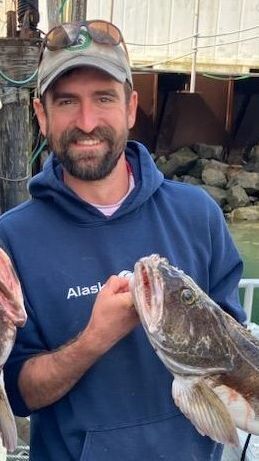Sam Artaiz, SONEC (Southern Oregon Northeast California) Partner Biologist

Sam Artaiz is in a unique position in Harney County. He's in two roles, one with Harney Soil & Water Conservation District (SWCD) and one with Harney District Natural Resources Conservation Service (NRCS). In these roles Sam works closely with landowners to help determine how through either Harney SWCD or NRCS programs, private ranching wild flood irrigation infrastructure can be updated to improve water management across the land for the benefit of the ranches' business as well as for wildlife habitat. "The SWCD duties from a day-to-day perspective include site visits with landowners to discuss issues and solutions around wet meadow, riparian and stream habitats, scoping project with maps, cost estimates and timeframe. Next steps are working with a partner organization on how a project can be achieved, applying for grants, securing funding and managing contracts with engineer designs, scoping permitting process, and builders for projects. My NRCS duties are similar but funding, project scoping, engineering and contracting is all internal as it's a federal organization which provides services to its contracts. Once projects are contracted I help the landowner with aspects of the project with construction, certification and payments."
Sam is new to Harney County, arriving here in 2022 but it's not his first time to Southeast Oregon. "Up until 2014 I never ventured east of Bend in Oregon, we were a westside family. However, I landed a seasonal summer job working in riparian bird research along the Silvies around the Harney and Grant County Border and was amazed by the extensive wetland and riparian system in eastern Oregon."
Sam grew up in Banks, Oregon on 5 acres with his parents and 4 siblings. "I became infatuated with wild waterfowl at a young age and had aviaries with a collection of native and nonnative wild duck species. I went to college for a Bachelor of Science in Wildlife Management with a focus in Wetland and Waterfowl Science at Humboldt and Oregon State University. I've worked around the US at bird collections as an aviculturist, Forest Service Forestry Technician, US Fish & Wildlife Service Biological Technician, Oregon Department of Fish & Wildlife Fish Technician, Marine Laboratory Technician, Agricultural Research Service Range Technician as well as a line cook in Alaska. Most of my work was always in but never directly with wetland management. I learned about conservation districts and their work through a capstone class at Oregon State and was fascinated by their mission to improve the soil, water and habitat by supporting conservation with landowners on their private lands. I secured a grant with a SWCD on my parents property and really enjoyed writing and carrying out the management for habitat restoration. Around that time I started looking into programs around the state in wetland restoration and stumbled on the SONEC Partner Biologist Position after its inception. I read about its project scope and role with the Farm Bill to provide habitat for waterbirds. At that time I was working in Alaska and didn't think I would be back in the lower 48. However, by happenstance I had found myself just moved back to Oregon in Burns for another position when I stumbled across the SONEC Partner Biologist position being flown. I thought it would be a great job to learn about assisting landowners on their lands focusing on wet meadow and floodplain projects that directly improve and enhance waterfowl, a clade species that started my passion for my career."
And within the short time Sam has been in Harney County he's experiencing the benefits of delivering on projects for landowners: "With this high water year [2023], I had multiple clients reach out to mention how well the new structures worked and ability to flood wet meadows easier to meet management goals.The conceptual concept of these projects also comes full circle when a van of international birders are parked across the road admiring a cacophony of consolidated waterbirds on the very fields the new structures irrigate."
Sam is a new partner actively involved with the Harney Basin Wetlands Collaborative. He brings a passion for the landscape and a new voice to the table regarding wetland health that contributes greatly to conversations. "Wetlands have always piqued my fancy. I have always enjoyed their complexity and many levers of biotic and abiotic factors that dictate their existence and change their makeup. In college I read a paper which measured the ecological service value of different ecosystems. Apart from coastal systems, inland wetlands fall as one of the most valuable habitats by acre. With hay and cattle production being strongly associated with wetland health, when I heard there was a collaborative around wetland research and restoration I knew it was important to join. Knowing what upcoming projects and what research key findings on the health of the wetlands from fellow partners of the collaborative can help me in my role to provide more precise information and project planning for landowners. In addition, working with the collaborative has helped us work towards tackling larger restoration goals with partners."
Sam has many interests outside of work. "One of my big passions I have gotten into in the last 4 years is small game hunting. Me and my partner have a bird dog and enjoy going into the forest, rimrock and sloughs to hunt for upland birds. It combines my love of hiking, walking a dog, nature, hunting as well as cooking post hunt. When the snow flies in the mountains we take on skis and in an olympic biathlon style, hunt snowshoe hares to make rabbit stew. When it's not hunting season I enjoy gardening both a vegetable garden and growing a native plant garden from seeds. The other array of hobbies include bug collecting/curation, painting, fly fishing, packrafting, carnivorous plant propagation, fly rod reverberation, nano aquarium and some woodworking. Also with moving back to Oregon, I have taken time to visit family west whenever possible."

